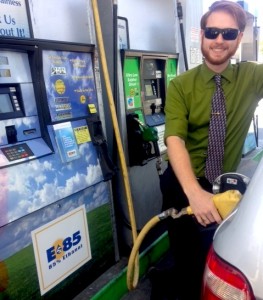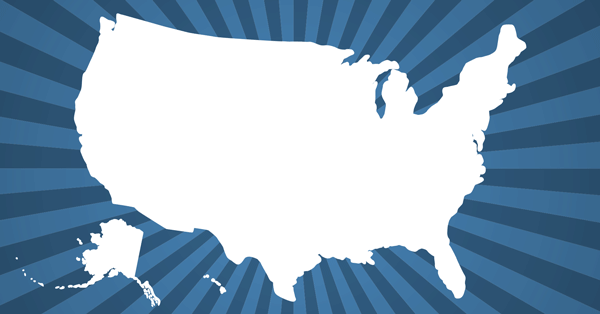Alt-fuel stations growing, without subsidies or regulations
Without much fanfare, the number of fueling stations offering an alternative to gasoline has passed the 20,000 mark, according to the federal government’s Clean Cities program. The number of gasoline fueling stations, according to the American Petroleum Institute, is 153,000.
The figure shows that alternative infrastructure is gaining ground even as the number of alternative vehicles sold in the U.S. has slowed of late, an obvious result of falling oil prices. On the other hand, the sale of alternative vehicles has actually accelerated in Europe. China is also giving indications of a big push that will attempt to make it the leading market of alternative vehicles in the world.
Clean Cities is a 1993 initiative of the Department of Energy that has picked up steam in recent years. Its efforts to reduce gasoline consumption include 1) replacing petroleum with alternative and renewable fuels; 2) reducing petroleum consumption through smarter driving practices and fuel economy improvements; and 3) eliminating petroleum use through idle reduction and other fuel-saving technologies and practices. The goal is to reduce gasoline consumption by 2.5 billion gallons every year through 2020. The program claims to have already reduced consumption by 6 billion gallons since its inaugural.
In order to carry out its mission, Clean Cities has formed coalitions with nearly 100 major cities covering 82 percent of the population of the United States. Coalitions are comprised of local businesses, fuel providers, vehicle fleets, state and local government agencies, and community organizations. These stakeholders come together to share information and resources, educate the public, help craft public policy, and collaborate on projects that reduce petroleum use. There are networking opportunities with fleets and industry partners, technical training workshops and webinars, plus information on alternative fuels, advanced vehicles, idle reduction, and other technologies that reduce petroleum use. There are also funding opportunities from the Department of Energy.
Probably Clean Cities’ biggest initiative, however, has been a map of alternative fueling stations across the country. The Station Locator has now grown to a list of 20,000. These include: 12,334 electric recharging stations, 3292 propane stations, 2,956 gas stations that offer E85 (up to 85 percent ethanol), 1,549 compressed natural gas (CNG) outlets, 729 biodiesel pumps, 115 liquid natural gas (LNG) outlets and 41 hydrogen stations.
Dennis Smith, director of the Clean Cities program, says that both plug-in electrics and propane vehicles are becoming increasingly popular. “Plug-in electric vehicle sales for consumers have passed more than 300,000 since they were introduced in 2010, and an increasing number of fleets are using propane,” he told AgriMarketing.com. The growth of these stations is most likely in response to a need from these drivers. In addition, both propane and EV stations are less expensive to purchase and install than those for many other fuels.” Smith also said that the number of CNG and LNG stations understates their impact, since they tend to service heavy-duty trucks along interstate highway routes.
While the sale of alternative vehicles may have leveled off of late in the United States, they are burgeoning in Europe, despite the drop in world oil prices. Alternative fuel vehicle registrations rose 17.4 percent across Europe in the second quarter of 2015, and 24.6 percent over the first half of the year. There are now nearly 300,000 registered vehicles, according to the European Automobile Manufacturers’ Association. The United Kingdom led the pack in major markets with an increase of 62.4 percent registrations in the second quarter. Norway led the entire continent, however, with 77 percent of all 11,614 newly registered vehicles being electrically powered. The country has offered huge incentives to alternative fuel owners as its oil production from the North Sea begins to taper off.
Meanwhile, in China, the Beijing city government is considering investing tens of billions in a plan to make the Middle Kingdom the world’s largest manufacturer of alternative vehicles. China now has 18,000 EVs on the road, 10,133 public passenger vehicles and 8,360 owned by individuals and organizations.
To cut down on traffic, Beijing has a unique system in which cars with certain license plate numbers are forbidden from being within the city’s fifth-ring road from 7 a.m. to 8 p.m. from Monday through Friday. And it’s not automatic that a new car can receive a license plate. But electric vehicles are much easier to register and will be allowed to drive within the city at any hour, giving them a distinct advantage. BAIC, the principal maker of EVs, has become China’s largest automobile manufacturer, controlling 22.5 percent of the market.
So the initiative to cut down on imported oil is universal. In Europe, it comes from heavy-handed government subsidies and regulations. In China, it comes from government favoritism and outright prohibition. In the U.S., however, volunteer organizations, led by government initiative, seem to be achieving similar results.



